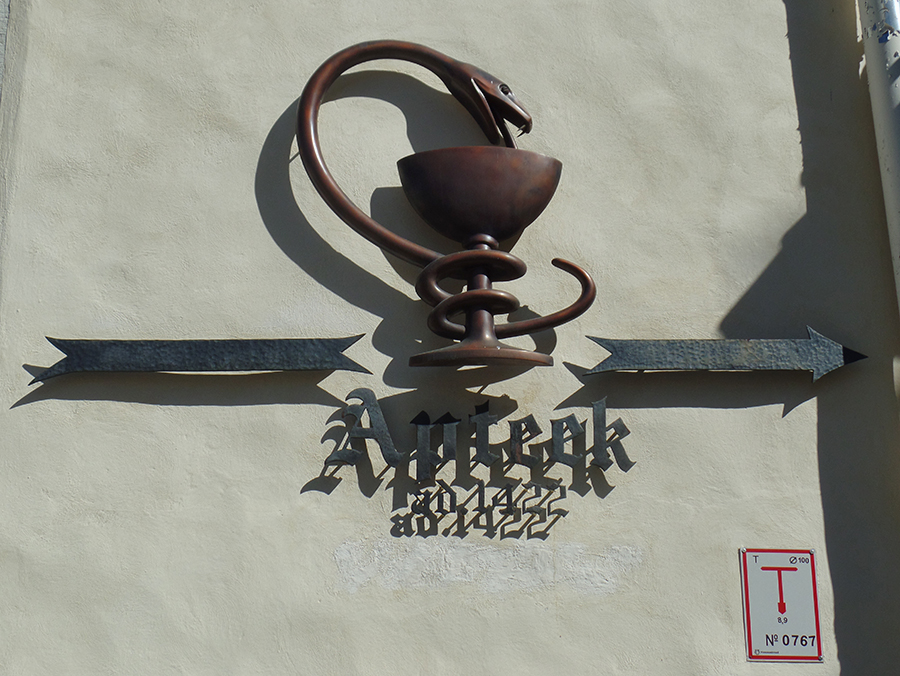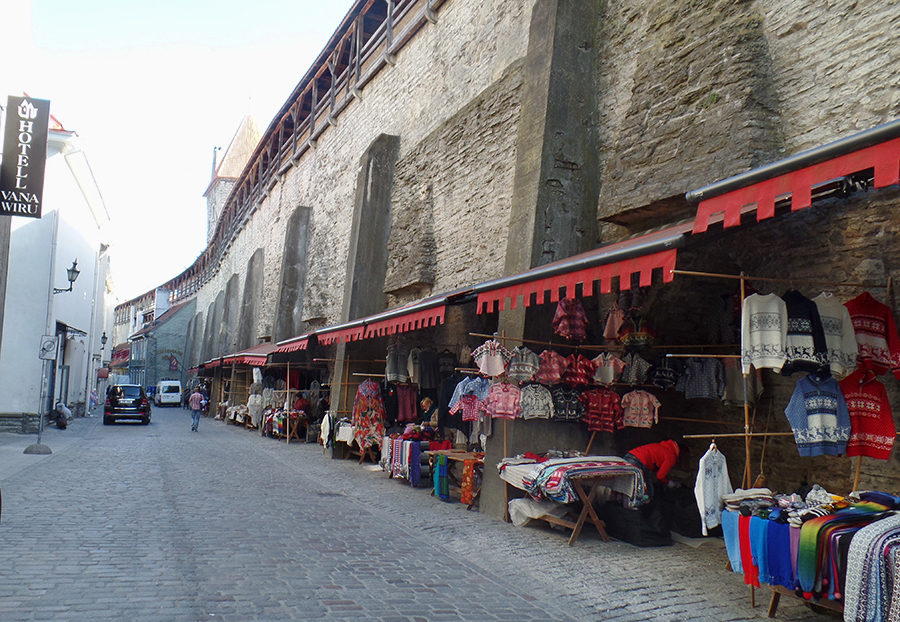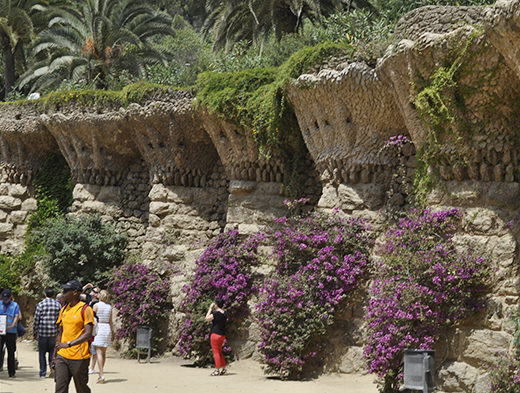Tallinn was not on my bucket list, but it should have been. The old city is a designated UNESCO site and well preserved, with towers, walls and medieval traditions intact. Delivery trucks scurried to be off the streets by 10 am when most of the shops opened and the tourists flock in from the cruise ships. As you enter the old city through the Viru Gate a long row of flower stalls line the left side of the street. The power of the floral scents are almost overpowering. The mélange of colors are a feast for the eyes. Wall Street is not home to bankers and arbitrage, but rather small shops selling hats, scarves and warm sweaters. The old city hall, built in 1371, is still used for ceremonial events. The Burgermeister or mayor comes out on an upper floor window once a year in June to read to the people the laws and regulations that every Tallinnian must obey. Above her or him are two crocodile heads each with a crown that remind everyone that breaking the law brings consequences.
The streets carry scents of fresh baked breads and sweets, a chocolate shop tempts as does the world’s oldest, so say the Tallinnians, continuously operating pharmacy, in business since 1422. It was owned by a single family for over three hundred years. The display of old bottles for herbal medicines and tools used to cork bottles and mix vats of elixirs are surrounded by a coat of arms, old plaques and even a small crocodile hanging from the ceiling. The explanation was that the Pharmacist was one of the few educated people in the middle ages. Thus many came to learn from him. But when learning to read and write, they often had a tendency to steal from him as one of the rich people in town. So the crocodile was a reminder that thieves are punished. One of the highlights of the shop are the medicinal chocolates they sell that include alcohol, garlic and even marijuana seed varieties.

We were shown the upper city, where the elite of the time lived and still live. The story goes that those who lived above the city would only come down to find the labor they needed for their factories and farms. So in essence, during the middle ages, Tallinn was two cities living side-by-side in a symbiotic relationship.
Our guide discussed how Tallinn was a prosperous trading city until the trade routes shifted after the discovery of America. Until then the source of many of the goods sold in both Europe and Russia passed by their city. Afterwards, much of the European trade shifted in the other direction, across the Atlantic and the importance of the city declined. This also explains why the old city is so well preserved, since it became much more self-sufficient and less dependent on outside commerce.

Discussion with the guide revealed that modern Estonia is a country of 1.6 million, with 400,000 in Tallinn. She indicated that unemployment is low, about 3% and that jobs for skilled tradesmen are plentiful and higher paying than for office workers. Tallinn is also a high tech hub, with voting taking place for all elected officials over the internet. Local entrepreneurs are also seeking to replicate the success of Skype, which was created in Tallinn and sold to Microsoft. The average salaries are between $1,000 and $2,000 per month, although those on pensions from before independence in 1991 are living on about $400 per month. The living expenses for the pre-independence pensioners are considerably lower as most were given housing by the Soviet government and they have retained those apartments since. An average apartment is about 60 square meters not including kitchen and bath.
We asked about the cathedral in the city center whose spire had multiple different colored shingles. We were told that the spire had been struck by lightning eight times. The congregation stopped trying to match the shingles as it was costing too much. During the Soviet period the population was discouraged from worship. While originally a Catholic country, with most of the churches and cathedrals built by the catholic congregations, during the reformation the country swung heavily to Lutheran. After the Soviet period, however, less than ten percent of the population describes itself as religious. As a result the congregations are small and the expense of maintaining the churches and cathedrals is burdensome.
We took a brief ride on the train from Tallinn to Nomme, about twenty minutes away. Nomme is now a suburb of Tallinn, although it was a separate village when first built. The chief attraction of Nomme is the market. Fresh flowers, vegetables, fruits, meats, fish, cheeses, and baked goods are available here. While the food prices are quite high, they were not out of line with those of the other Scandinavian countries visited on this trip.






No Comments